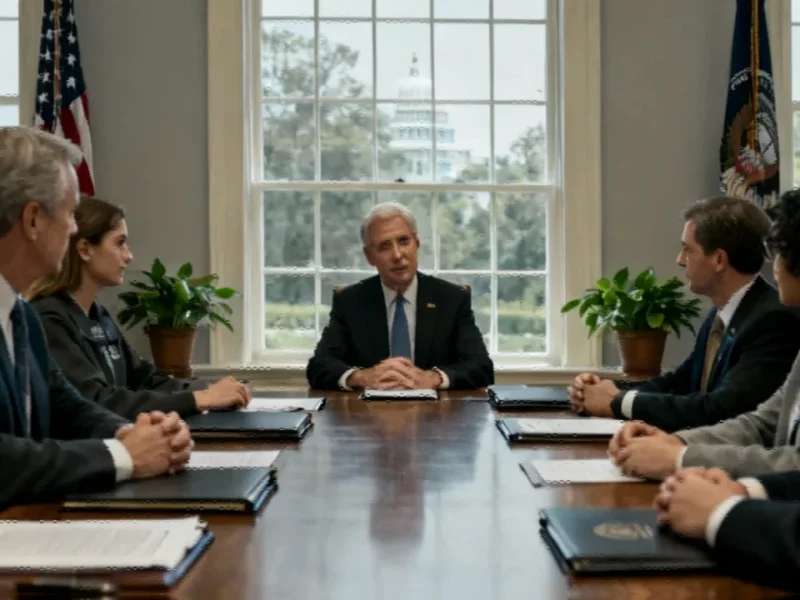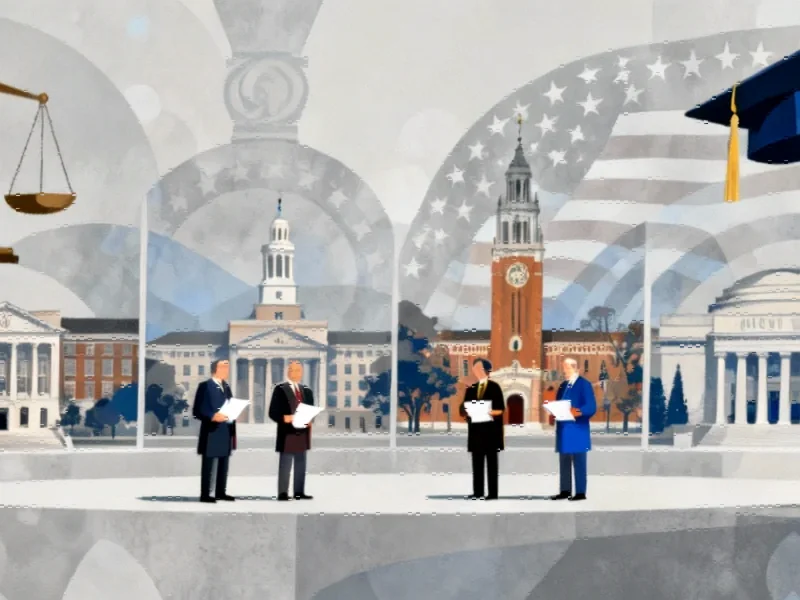Note: Featured image is for illustrative purposes only and does not represent any specific product, service, or entity mentioned in this article.
Administration Expands Outreach on Controversial Funding Compact
The Trump administration is significantly expanding its outreach efforts to universities regarding its proposed funding compact, turning to additional institutions after several initial invitees rejected the offer. White House officials have now extended invitations to Washington University in St. Louis, the University of Kansas, and Arizona State University to join a Friday meeting discussing the proposal, according to sources familiar with the developments.
These new participants will join previously invited institutions including the University of Texas, University of Arizona, Dartmouth College, Vanderbilt University, and University of Virginia in what appears to be a concerted effort by the administration to build support for its higher education funding initiative. The expanded outreach comes as the administration seeks to overcome initial resistance from some academic institutions.
Strategic Implications of the Expanded Outreach
The administration’s decision to broaden its engagement with universities signals a strategic pivot in approach. By including both public and private institutions from diverse geographic regions, officials appear to be building a broader coalition of support. This expanded dialogue around higher education funding represents a significant development in the ongoing relationship between the federal government and academic institutions.
Industry observers note that the administration’s persistence with the compact proposal despite initial rejections demonstrates the priority placed on reshaping federal-education partnerships. The inclusion of both research powerhouses and comprehensive universities suggests a comprehensive strategy to address varying institutional concerns and priorities.
Broader Technology Context and Parallel Developments
The administration’s education funding initiative comes amid significant technology sector realignments that are reshaping multiple industries. Just as artificial intelligence markets experience transformation, the education sector faces its own potential restructuring through proposed policy changes.
Similarly, other sectors are witnessing substantial shifts in their operational landscapes. Recent enterprise software developments have highlighted how technological vulnerabilities can prompt widespread organizational reassessments, not unlike how universities are now evaluating their positions on federal funding arrangements.
Future Implications for Higher Education Funding
The outcome of these expanded discussions could establish new precedents for how universities engage with federal funding initiatives. Institutions are carefully weighing the potential benefits of participating in the compact against concerns about academic independence and institutional autonomy.
As the higher education sector navigates these complex negotiations, parallel industry innovations in energy and computing demonstrate how traditional sectors are adapting to new technological and regulatory landscapes. The education compact discussions represent a similar adaptation to evolving federal priorities.
Looking Ahead: What’s Next for the Compact Proposal
Friday’s meeting will likely address specific concerns raised by both initial and new invitees, with administration officials expected to provide additional details about the compact’s terms and implementation timeline. The expanded participant list suggests the administration recognizes the need for broader consultation and potentially modified approaches to secure institutional buy-in.
The ongoing evolution of this initiative reflects broader market trends in public-private partnerships across multiple sectors. As universities continue to assess their positions, the administration’s ability to address institutional concerns while maintaining the compact’s core objectives will determine whether this expanded outreach yields greater acceptance than the initial round of invitations.
The outcome of these discussions could have lasting implications for federal-education relationships and funding models for years to come, potentially reshaping how universities approach government partnerships in an era of increasing scrutiny and accountability demands.
This article aggregates information from publicly available sources. All trademarks and copyrights belong to their respective owners.

